
Today’s weak housing finance data, summarised earlier, was particularly concerning as it revealed that first home buyer (FHB) demand has taken another leg down, despite nominal mortgage rates at near multi-decade lows, and confirmed the housing cycle is being driven almost exclusively by investors, whose value continues to reach for the stars (see next chart).
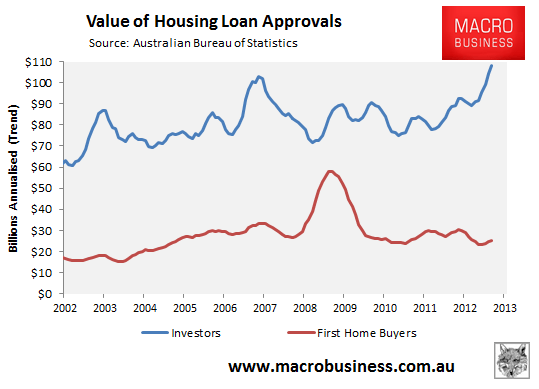
As noted in my earlier post, FHB nationally slumped by 13% (non-seasonally adjusted) in August and were down 22% over the year. They also represented just 13.7% of total owner-occupied commitments – the lowest level since April 2004 (see below charts).
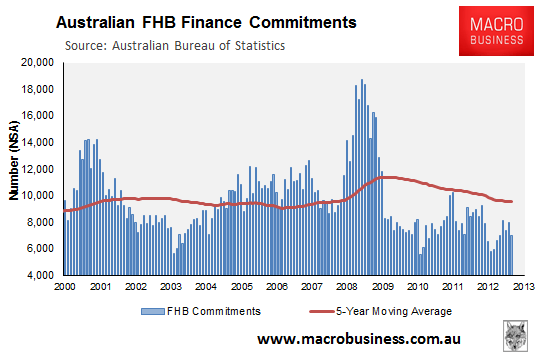
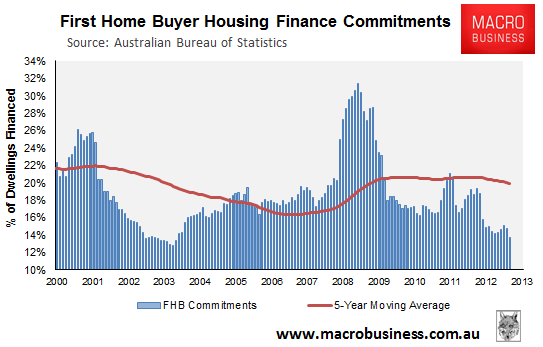
Looking at the state-by-state break-down, you can see that the FHB retreat has been driven by New South Wales and Queensland, where grants on pre-existing dwellings were cancelled in October 2012. However, Victoria has also joined the fray, with commitments falling sharply following the removal of FHB subsidies from 1 July (see below charts).
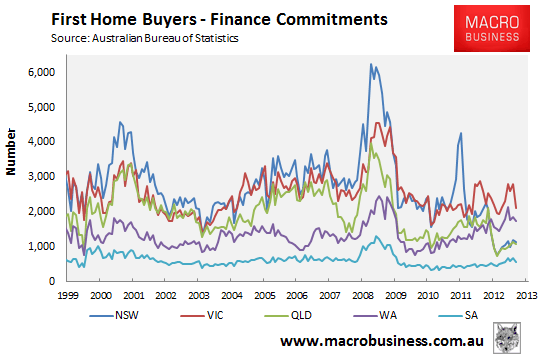
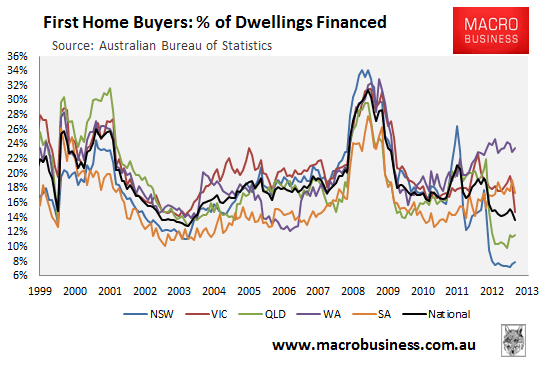
Whereas the FHB share fell to just 13.7% nationally in August, well below the 5-year moving average (5yMA) of 19.9%, the shares in New South Wales and Queensland were just 7.9% and 11.6% respectively, down from 5YMAs of 19.4% and 18.3%. Victoria’s FHB share also fell to 14.7%, down from 19.6% in June and a 5YMA of 21.2%.
A final interesting observation is that the average loan size for FHBs has shown virtually no growth in more than four years. Since March 2009, the average FHB mortgage has grown by only 0.9%, whereas the average mortgage for the market as a whole grew by 8.0% (see below charts).
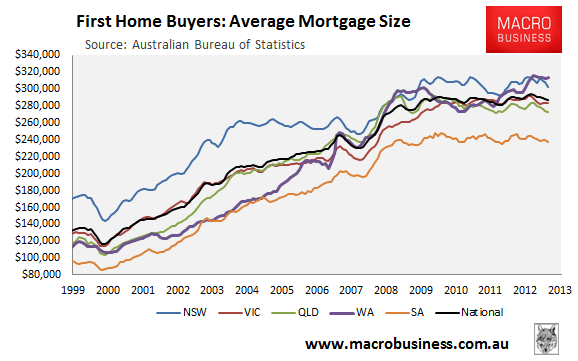
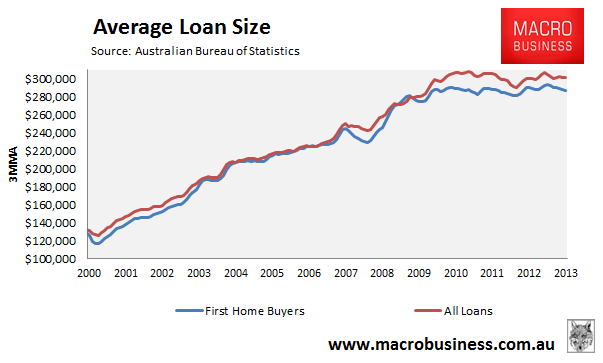
With changes to FHB grants favouring new construction over pre-existing dwellings taking effect in Western Australia and the ACT from September, mortgage demand from FHBs is likely to weaken further over the remainder of the year. As noted earlier, this is undoubtedly an investor led housing recovery.

